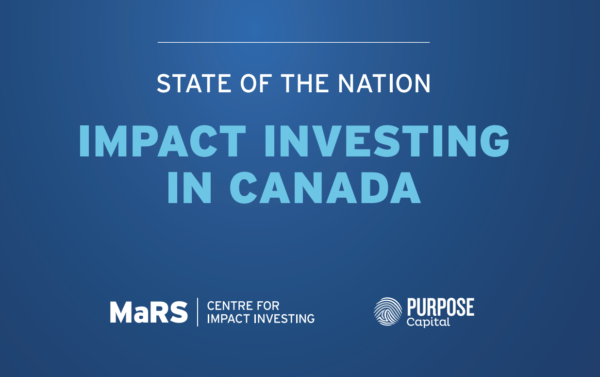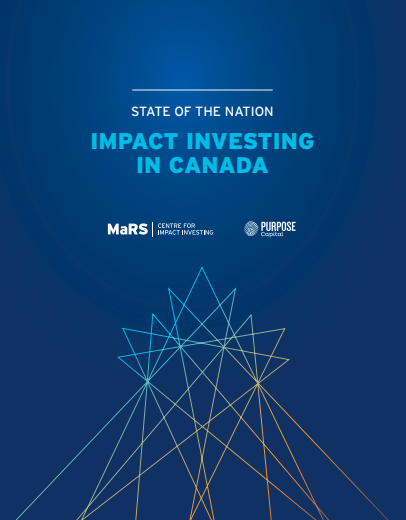As interest and activity around impact investing continues to grow in Canada, so does the demand for information around trends and opportunities. The State of the Nation Report provides updated information and analysis that can inform both new and existing actors in the impact investment sector. The report, released in March 2014, was jointly authored by Purpose Capital and the MaRS Centre for Impact Investing.
This report has several related objectives:
- To describe impact investing and how it is developing across the country
- To assess current impact investing activity across sectors, regions and asset classes
- To share examples of investments that integrate financial returns and social impact
- To identify trends, issues and challenges across market segments
- To prioritize recommendations to allow impact investing to fulfill its potential
TABLE OF CONTENTS
INTRODUCTION TO IMPACT INVESTING
THE SUPPLY OF CAPITAL: IMPACT INVESTORS
- High Net Worth Individuals
- Foundations
- Community Finance Organizations
- Financial Institutions
- Pension Funds
- Government
- Related Supply Side Actors
FINANCIAL PRODUCTS
- Product Analysis
- Product Trends
CONNECTING THE MARKET: INTERMEDIARIES AND ENABLERS
- Supply-Side Intermediaries
- Financial Intermediaries
- Demand-Side Intermediaries
- Market Enablers
- The Marketplace of Intermediaries
THE DEMAND FOR CAPITAL: SECTOR REVIEW
- Affordable Housing
- Energy
- Agriculture
- Environment and Water
- Financial Services
- Education
- Health
- Non-profits and Social Enterprises
- Aboriginal Business
IMPACT MEASUREMENT
- Intentions for Impact Measurement
- Selected Measurement Frameworks
- Challenges of Impact Measurement
- Opportunities for Impact Measurement
GOVERNMENT ENGAGEMENT
- Directing Capital
- Demand Development
- Supply Development
SUMMARY AND RECOMMENDATIONS
Format
Theme






